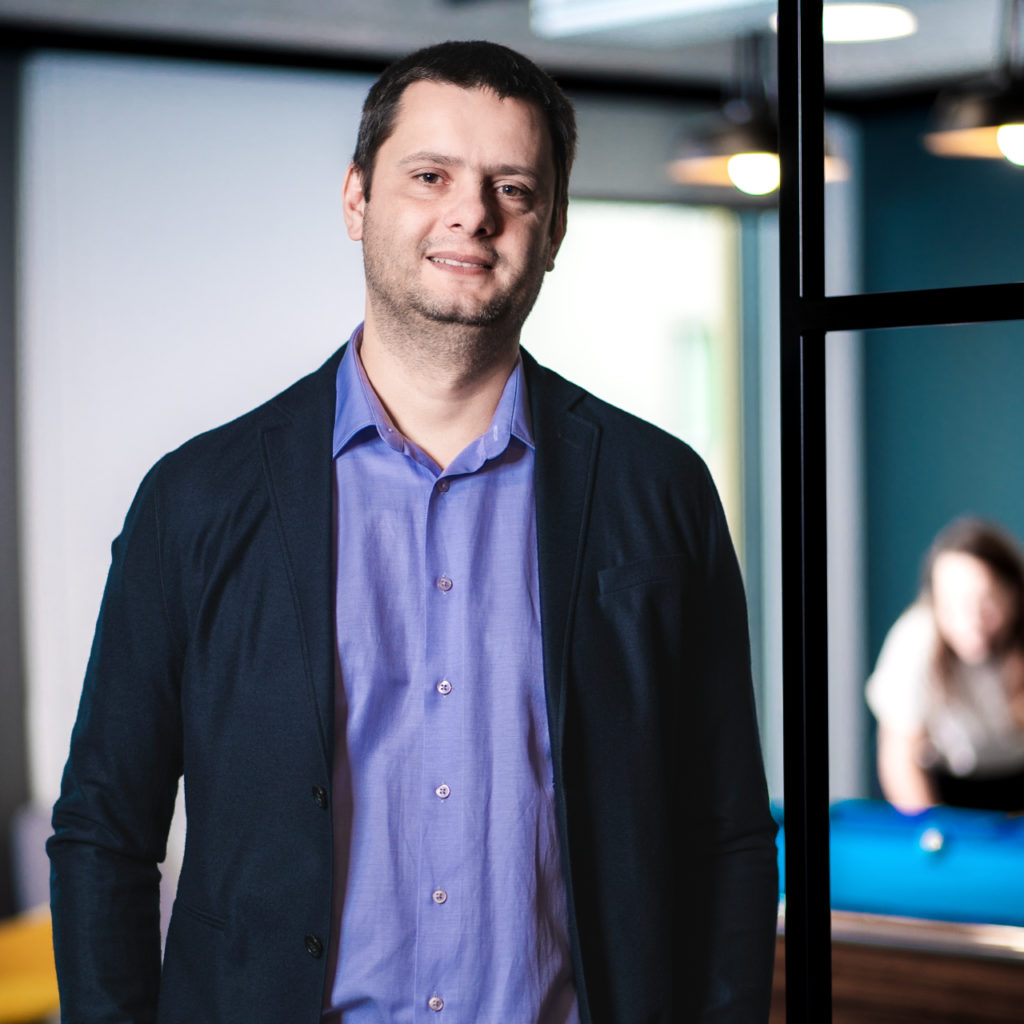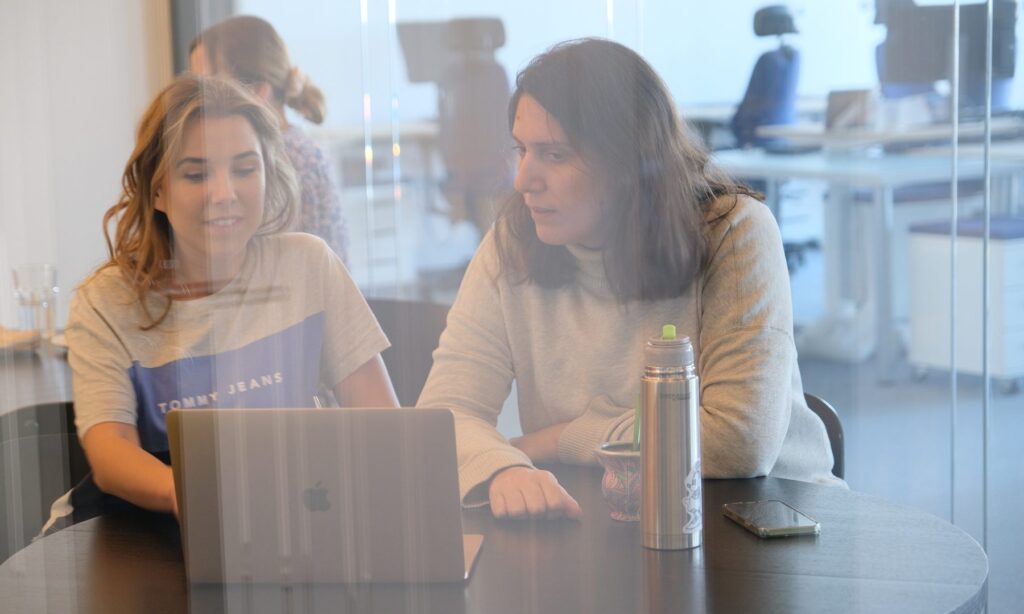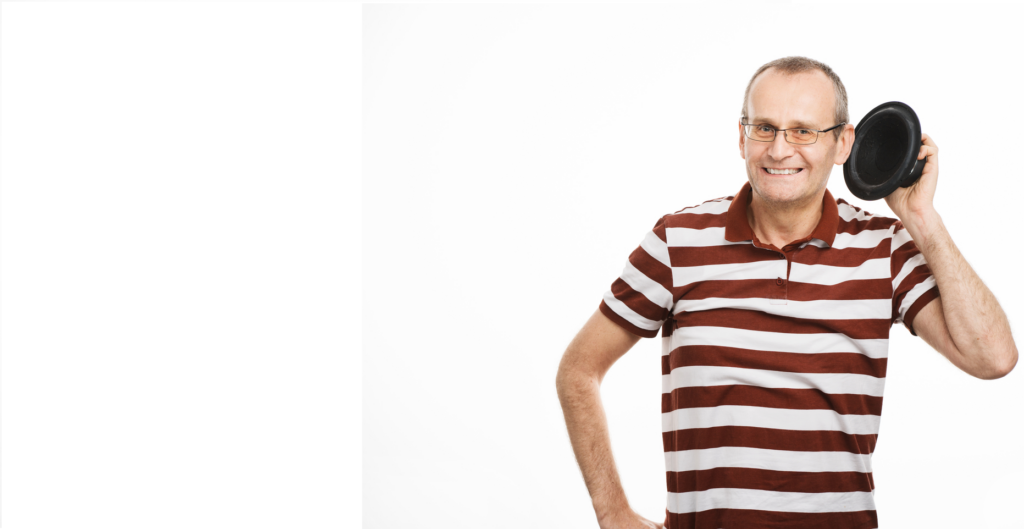Interview with Piotr Wierzba: Spyrosoft Synergy accelerates growth in Szczecin
Spyrosoft Synergy developers are working on a robot that assists in medical operations and a radar that measures the speed of a golf ball.
We are talking to Piotr Wierzba, co-founder of Spyrosoft Synergy, a Szczecin-based company that is part of the international Spyrosoft Group. Piotr, a computer science graduate from the Szczecin University of Technology, has been in the IT industry for almost 20 years. He has traversed the entire career path – from trainee programmer to owner and manager. He tells us how the experience he has gathered helps him support a young team in the rapidly growing office in Szczecin, where 62 people have already been hired in just a few months.
Take a look at Szczecin’s Spyrosoft Synergy’s Careers page
Where did you get the idea for yourself and your IT company in Szczecin?
Piotr Wierzba: Since the 1990s, I have been fascinated by computers, which were then rapidly developing. From Slupsk, where I graduated from an electronics technical high school and started programming, I came to Szczecin to study in the computer science department at the University of Technology. After my studies, I went for an internship at a local company, where I stayed for… 14 years. I started there as a programmer and left as Director of Operations.
During our studies, some of us decided to go abroad, thinking it was the best option. Poland was not yet where it is today. And I had Szczecin in my heart all the time. I thought then that I would not leave because there are great people here; it is possible to work here and be recognized worldwide.
I always wanted to be part of a cool team, to work on interesting projects. So, I got involved in building a brand-new company to have a say in what environment I work in. And so, together with Marieta Węglicka and Piotr Anioła and a group of people from the Szczecin IT market, we founded Spyrosoft Synergy. We had known Spyrosoft Group’s CEO, Konrad Weiske, for years, so we did it together. Spyrosoft is a shareholder, and we are the founders and shareholders of the Szczecin company, which is part of the group.
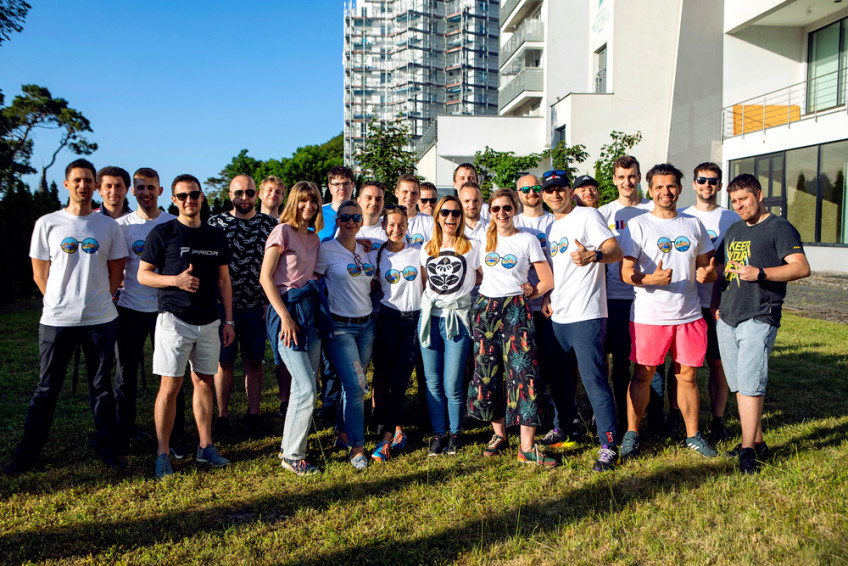
Ok, but where do you get programmers from? This is probably the most sought-after profession in the world.
Piotr: People are attracted to people. Currently, 75% of new team members come to Spyrosoft Synergy from the referral program. Those who come appreciate our approach and recommend the work to more people.
Many years of work in the Szczecin market have resulted in the building of many good relationships. In the early days of the company, we ourselves encouraged people to join us. This stage already passed some three months ago. Now, these new people are attracted to the team itself. It is the team that knows best who fits in.
Once you know who you’ll be working with, it’s important what interesting projects you’ll be working on. Since Spyrosoft is active in many areas of computing, it is easy for newcomers to find something that interests them.
For engineers, what they will do is extremely important. In Szczecin, we are focusing on robotics – we want to focus on small, mobile robots – and HMI, or Human Machine Interface. This is supposed to be our main speciality. When it comes to HMI, we work in the medical and automotive areas but also within Industry 4.0 or consumer electronics. We are involved in designing HMIs in graphical form, writing software for touch screens and voice interfaces for devices such as a panel for a hospital bed, a screen for a watch, or a thermostat.
Apparently, you are also working on devices to support eye surgery and cars of the future?
Piotr: Exactly. The field of HMI and robotics in the modern world has virtually no limits. Together with the team, we want to utilise technology in a direction that serves us. All this is to support the evolution of the world and our interaction with devices.
The Spyrosoft Synergy team is developing software for a device that supports surgeons during eye surgery. Combining it with a surgical microscope helps improve precision in a very limited surgical field. Working with the manufacturer, we are extending the existing control panel software used during the procedure.
HMIs also accompany us in everyday life. Kitchen robots are one example. Interaction with devices of this type is evolving a lot. The Szczecin team has the ability to create HMIs that will appear in our homes in a few years. This proves that our vision and domain knowledge in this area helps our customers a lot. We recently had a presentation on this exact topic by Przemek Nogaj, acting Head of HMI Technology, at CarHMI Berlin 2022 – one of the largest international conferences on HMI topics.
There are a lot of programmers in Szczecin who have experience in the automotive industry, as there are a lot of companies in this sector here. At the Spyrosoft Group, these engineers are a great fit, with the automotive sector accounting for about 29% of its revenue. We work on autonomous driving solutions, sensors, in-car displays, speedometers, and radio panels.
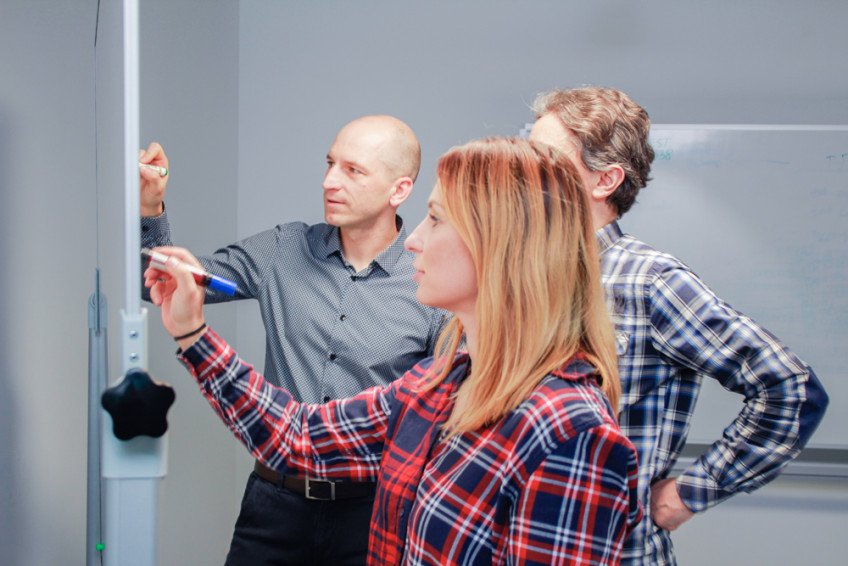
In Szczecin, we are developing a prototype user interface (HMI) for the car of the future. It consists of two screens: the main one, where we can display and freely manage several applications, and a smaller one located between the driver and passenger. The latter contains application-dependent active menus and allows you to make a gesture that controls the operation of the application on the first screen. This is a research project in which we test the validity of the hypothesis that there is a huge space for gesture-controlled HMI systems in the automotive industry. The whole thing is built on Android Automotive.
Robotics itself is also about autonomous vehicles – in Szczecin, we support the development of an operating system for such vehicles. As a result, our team knows exactly which tools to use when designing the software architecture for the next generation of robots.
In Szczecin, we also have the opportunity to expand the functionality of robots that support the construction of electronic products. In our office, we can experiment with such a robot (the client has supplied us with one).
Back to the future and vehicles: our team is designing the software architecture for autonomous electric vehicles. Will they still be cars or more like “buses”? Time will tell.
We exhausted the topic of autonomy and remote interaction with the environment when working on our R&D project, the Avatar robot. The project is based on the ROS2 operating system, well-known in the robotics world. Our robot is designed to recognise the environment and be able to automatically explore the surface and the objects it is looking for. For this purpose, we used SLAM algorithms based on LIDAR data in conjunction with the Navigation2 package. Based on these technologies, we built a proprietary real-time algorithm that builds the topology of the room. Our algorithm is very effective in exploring small as well as large spaces. Thanks to the work of the team, our robot moves very smoothly and precisely in a set direction – we are very proud of that!
The robot itself (Avatar) is able to recognise objects; here, we use knowledge from the area of computer vision and machine learning algorithms. Screens well-known in the automotive industry are responsible for interaction with the environment, and this is where MCU technology comes in. The robot’s architecture is distributed, allowing us to simulate Avatar’s behavior in environments such as the Gazebo.
What else are you doing in Szczecin?
Piotr: We have contributed to the development of eyewear software for the medical and engineering world. The glasses make it possible to combine the real world with augmented reality in many different areas, such as human treatment and industry. The surgeon uses a 3D image of the patient’s heart based on previous scans and tests before surgery. The glasses make it easier for him to prepare for the surgery, which reduces the risk of complications during the operation. The glasses will also allow specialists from other locations to participate in the operation. One surgeon operates, and other doctors (e.g., from different countries) participate in the operation virtually, consulting in real time. This solution will also allow access to patients’ historical studies without having to search for them on the computer. Everything the doctor needs will be available in their glasses.
It will also be possible to use the glasses in other sectors, such as in industry, when building products. A person who assembles a device on the shop floor simultaneously has a visualisation of instructions or 3D models before his eyes. To be more specific – the glasses are manufactured by our client, and we contributed to the development of the software for them.
Another interesting project we are currently working on is a solution for golfers and baseball players. We develop software that manages radars to help measure ball speeds and trajectories under any conditions, even at home. This makes it possible to train when playing outside is not possible. We know exactly how the impact parameters affect the flight of the ball (ball speed, initial angle, the direction of rotation, etc.). The solution also makes it possible to visualise the ball’s flight and its parameters during sports coverage.
And what is your philosophy (and practice) of managing people?
Piotr: For me, the priority is the strength of the team. We always have a meeting in the morning. Those who come to the office sit at a table with coffee – the rest are present remotely. We talk about what’s ahead of us today and what tasks we are dealing with. The team appreciates the transparency of communication. Information about what is happening in the company, whether in the context of sales, administration, or recruitment, is therefore publicly available to us.
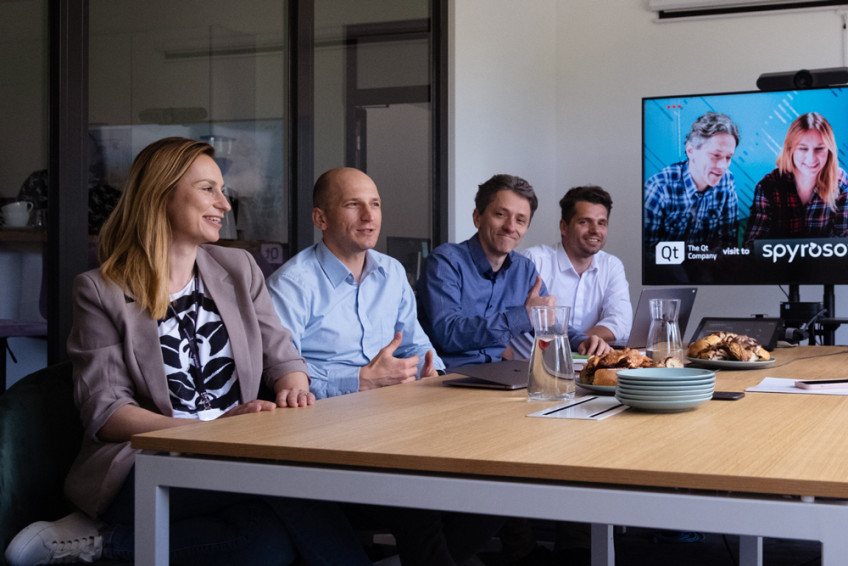
We also make sure communication is regular. In addition to morning meetings, we have an office meeting every week. We then talk about what we are satisfied with and what to change. If something is missing from the office, we discuss it together. Recently, for example, we introduced phone booths – small, soundproofed booths for quiet work, where everyone can isolate themselves.
Matters of vision for the development of team members also have an important place in my thinking about the team. A person who comes to a company thinks about the career path they will take next. Our role is to show them this path, to expand it in front of them so that they are able to learn new technologies quickly and efficiently.
What is important for a site manager when managing a team?
Piotr: In addition to transparent communication, the most important thing is motivation. People want to know that if they do something, they will have the support of the whole team. If the initiative comes from one person only, the speed of implementation is much slower. So, you have to define the initiative and get support. This motivates people.
When we prepare an offer for a client, we prepare it together; everyone brings something of their own and we work together.
We communicate openly. If we have something positive to share – we say it openly, and the same happens when we have more difficult topics to discuss.
What makes a developer happy?
Piotr: A project in line with the developer’s vision, where the developer’s role is clearly defined, and the technological scope and purpose of the project are challenging. When we hire engineers, they often ask what kind of project they will have the opportunity to work on. That’s why it’s so important to figure it out together.
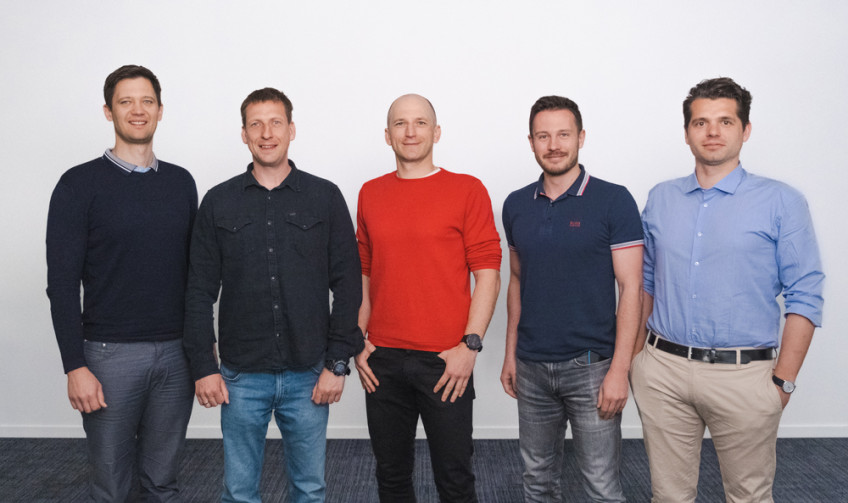
Of course, what is also important to them is the company culture, who they work with, and who they can learn from. They want to be able to go to a conference, some want to be a speaker at such a conference, they want to take part in creating an offer for the customer, and in offering it, they want to take part in the training. As I mentioned, we were at the CarHMI conference in Berlin in June, but also at Embedded World 2022.
When a new person joins the team, we already know from the recruitment process what technological area they specialise in and what projects they would like to do. We are looking for one that will allow them to develop, and – he or she – gets to do this project. Then, every quarter, such a person has a meeting with a line manager whose goal is to take care of their development.
Which means a developer needs development to be happy. What else?
Piotr: Support in the area of soft skills, in finding their way in the organisation. This is what Kasia, our People Partner, and Kamila, who is a coach who supports our strengths are very helpful at. It’s about things related to communication, self-presentation, and conflict resolution. For me, this is especially important because people come to us from different companies and different work cultures. They need tools and skills to help us talk to each other – we provide them. If we hire juniors, each of them has their own buddy or guardian. If we’re talking about seniors, we give them the opportunity to meet directly with customers. This is also important to them.
And what are the meetings for employees like?
Piotr: From the very first days at the company, we make sure that everyone feels comfortable and at ease in the new organisation. We focus on meeting in different groups, and an example is the Welcome New Joiners luncheon – when everyone says something about themselves. Once a month, a group of 5-7 new hires then meet with the people in charge of operations and the company’s founders. This is our way of welcoming new team members and guiding them through those first moments, which are exciting for everyone but can often cause stress related to the new situation.
We also have the campfire initiative founded by Jakub, our technical leader. “Virtual Campfires” are regular meetings where we share knowledge about new tools, technology trends, and insights on IT project management. It is also an opportunity to share experiences from our travels or present our interests, not necessarily related to technology.
We also have R&D initiatives under the leadership of Marieta, who is our Chief Technology Officer. We run projects that touch on HMI and robotics that are aimed at developing the skills of engineers and exploring new technological horizons. There, our team has the opportunity to decide which technology they want to learn and use to create projects. You can later show them off at an industry conference or on social media – it builds team pride.
How much direct work is there with clients?
Piotr: There is lots. This matters to our clients because they have access to knowledge and a shorter communication path. The fewer intermediaries, the greater the precision – engineers are scientific minds; they need to know very precisely what they have to do in order to do something reliably. And the customer appreciates quality not on a presentation slide but in the final product.
Recently, clients from the medical, automotive, and industry 4.0 sectors came to our office for a joint workshop. Soon we will go visit them in Berlin and Nuremberg. Direct contact with the client is necessary. It also influences the shape of our offerings – the more the team meets with the client, the better they are able to define what challenges we face and how we can solve them.
What are your plans for employment?
Piotr: We have been in Szczecin for several months, in August we already had 62 people on board, within 3-5 years we will have more than 200.
We currently have an office in Technopark, a nice urban development between two parks, 10 minutes from the city centre. We have a large parking lot and showers. There is also a bike room, all guarded by security.
Naturally, if it turns out that we need more space, we would consider moving to a new building, where we would be the only tenant so that the Spyrosoft Synergy office is recognised in the market as an IT icon in Szczecin.
Szczecin has been investing heavily in infrastructure in recent years, and new business investments are also emerging on the outskirts of the city. It’s a great place to live. It is the third-largest city in the country by area and the seventh-largest by population. So, we have no problems with crowding and communication.
The original article was published in wszczecinie.pl
About the author

